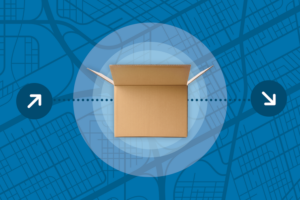Timely delivery is crucial for efficient logistics regarding Less-than-truckload (LTL) freight shipping. The entire supply chain operates more efficiently when shipments arrive on schedule. In LTL freight shipping, time is essential. Every timely arrival of your pallet keeps business operations smooth and maintains a good business reputation.
However, achieving this level of punctuality can take time and effort. LTL freight faces various challenges, such as unexpected traffic jams, bad weather, and logistical issues. The impact is more troubling than just a delayed package. Delays can cause production stops, lost sales, and harm your brand’s reputation. That’s why it’s critical to understand these risks and develop strategies to avoid them.
Are you interested in maintaining smooth shipments? Continue reading to learn practical tactics for guaranteeing consistent on-time deliveries!
WHY IS ON-TIME DELIVERY CRUCIAL?
In business, time equals both money and customer trust. On-time delivery is essential, especially in industries dependent on just-in-time logistics or tight production schedules. Delays not only increase costs but also disrupt operations and lower customer satisfaction.
How Delayed Shipments Affect Operations
When shipments are late, it’s more than an inconvenience. It sets off a series of operational troubles. Delays can stop everything for businesses that need goods delivered sequentially for production. Production lines stand still, workers remain idle, and resources must be used. This is particularly problematic in sectors like manufacturing, automotive, or technology, where timely component delivery is critical to maintaining continuous production.
Delays are not just a hassle but can also be expensive, as companies may face high fines for missing contractual deadlines.
Customer Satisfaction: the Hidden Cost of Delays
How happy customers are significantly depends on how quickly they receive their orders. In markets driven by consumers, people expect swift and dependable services. If one part of the supply chain experiences delays, it can prevent delivery dates from being missed. This can damage a company’s goodwill. These days, in the digital world, even one bad review about delays in deliveries can significantly affect how future customers view a business. Because of this, keeping a track record of on-time deliveries is essential to keep current customers and draw in new ones.
Cost Implications of Shipping Delays
Besides the immediate expenses of speeding up shipping processes to address late arrivals, there are broader financial risks.
Companies might encounter refund demands or contract fines. Sometimes, they may even lose clients to more dependable competitors. Moreover, internal expenses like overtime payment for employees dealing with delays or additional admin tasks to rearrange operations can rapidly escalate, adversely affecting the company’s financial stability.
Common Reasons for Delays in LTL Shipments
Knowing the usual reasons for LTL freight shipping delays helps businesses plan better and reduce problems. Here are some critical causes of delays in LTL shipments:
1. Weather Conditions
Bad weather conditions are a primary and hard-to-predict reason that can slow down LTL shipments. Heavy rain, snow, hurricanes, or other harsh weather events can worsen driving conditions, leading to slower delivery times or complete stops in transportation. Weather problems may affect the main routes and the ability to reach delivery locations, making it challenging for LTL carriers to stick to their schedules.
2. Traffic Congestion
Traffic jams often cause delays in LTL shipments, as well. Busy urban areas and known traffic bottlenecks can slow down transit considerably, preventing trucks from moving smoothly through these sections.
LTL shipping can significantly increase travel times because it involves many stops to handle different shipments. Minor traffic delays can add up, resulting in lengthy delays by the end of a route. Congestion usually worsens during holidays or unexpected roadwork, disrupting regular routes and schedules.
3. Scheduling Issues
LTL freight shipping requires careful coordination because it combines shipments from various customers into one truck. Poor scheduling, caused by human mistakes, software glitches, or route planning, can cause delays. Each pickup and delivery needs to be on time. Missing or delaying one affects the whole day’s schedule. Also, wrong information about a shipment, such as weight or size, may lead to last-minute changes and delays.
4. Equipment Failures
The reliability of trucking relies heavily on equipment that is in good working order. Mechanical truck issues, ranging from engine troubles to brake failures, can halt operations until repairs are made, leading to service disruptions and missed delivery timelines.
Maintaining equipment is vital for on-time deliveries. Breakdowns, like truck mechanical failures or loading equipment issues, often lead to unexpected delays. While regular maintenance helps reduce these problems, they can still occur and affect delivery times.
5. Regulatory Compliance
LTL freight shipments must follow various regulations, including inspection and road compliance checks. If a vehicle or its load doesn’t meet the required standards during these checks, it may be stopped until the problem is fixed. Also, drivers must stick to hours of service rules that limit how long they can drive within a specific time frame, influencing delivery schedules.
Tips to Ensure On-Time Delivery
Strategic actions and active management are essential for successful on-time delivery in LTL freight shipping. Below are vital tips divided into significant strategies to help reduce delays and increase shipment efficiency.
Effective Planning and Scheduling
Thorough planning and scheduling form the foundation of efficient LTL freight shipping. This requires clearly understanding your cargo’s needs and choosing optimal routes and schedules. Here’s how you can enhance your planning,
- Analyze Historical Data: Review past shipping records to spot trends and frequent issues. This will aid in forecasting potential problems and adjusting plans to address these concerns.
- Optimize Load Consolidation: Aim to consolidate shipments cleverly to utilize maximum space and decrease stops. This involves careful coordination but is crucial for reducing time spent in transit.
- Advanced Booking: Arrange pickups well ahead of time to secure the best transportation options without rushing.
- Plan Shipments Early: Always schedule shipments in advance to secure the best times and prevent delays caused by last-minute organization.
- Route Optimization Software: Use advanced routing software that updates paths based on live traffic, weather conditions, and other factors.
Choosing Reliable Carriers
Finding suitable carriers is essential for the timely arrival of your shipments. Here’s how to pick a trustworthy carrier:
- Check Carrier Performance: Assess potential carriers’ punctuality, capacity, and handling quality. Opt for those with excellent records in the shipping lanes you use.
- Read Reviews and Testimonials: Use feedback from other companies to understand a carrier’s reliability and customer service quality.
- Carrier Certification: Choose carriers with certifications or accreditations from relevant industry organizations that usually maintain higher service standards.
- Set Clear Service Level Agreements (SLAs): Establishing clear SLAs that include penalties for late deliveries can motivate carriers to ensure on-time delivery.
Managing Contingencies
Even with solid planning, unexpected delays can happen. It’s essential to prepare a backup plan:
- Build Buffer Times: Add extra time into your schedules for handling minor setbacks.
- Multiple Carrier Options: Build connections with several carriers for backup options if your leading carrier falls through.
- Ongoing Process Evaluation: Evaluate and tweak your shipping strategies based on previous successes or failures.
EFFECTIVE PLANNING AND SCHEDULING FOR LTL FREIGHT SHIPPING
To effectively handle logistics in LTL freight shipping for your business, grasp the critical role of detailed planning and scheduling. Properly managing these aspects ensures timely deliveries, refines operations, and cuts costs. Here are tips on organizing schedules efficiently for your company’s LTL shipping needs.
The Importance of Accurate Estimations and Scheduling
Getting your schedule right is vital in LTL freight shipping, as it boosts supply chain efficiency. Accurate estimates of timeframes and resource needs prevent holdups and delays. This accuracy keeps shipments in sync with your broader business activities, promoting smoother operations and optimal resource use.
Strategies for Enhancing Route Efficiency and Delivery Schedules
Improving the efficiency of your shipping routes and schedules requires several strategic approaches that significantly improve the punctuality of your deliveries.
- Adopt Advanced Routing Tools: Businesses invest in advanced technology that employs real-time data to optimize delivery paths. This system adapts to traffic and weather disruptions, efficiently rerouting shipments.
- Evaluate Historical Shipping Data: Analyze past shipping records to spot frequent delays or complications on specific pathways. Understanding these trends helps you prepare for future shipments by avoiding known obstacles.
- Allow for Flexible Timing: Schedule your shipments with extra time, a cushion for unforeseen delays. This foresight can lessen the impact of surprise disruptions on your supply network.
Actionable Tips for Businesses Using LTL Freight Shipping
Here are some practical tips to help ensure that your LTL shipments are managed efficiently:
- Start Planning Early: The sooner you plan your shipments, the better your scheduling and routing choices will be, leading to more favorable rates and smoother logistics.
- Use Technology for Real-Time Updates: Implement systems that allow you to track your shipments as they happen. This visibility helps you run your operations smoothly and updates you on delivery statuses.
- Communicate Proactively with Your Carrier: Regularly contact your LTL carrier. Getting frequent updates from them can alert you to potential delays so you can adapt quickly.
- Educate Your Team: Ensure all shipping team members understand the process for managing LTL shipments and their specific responsibilities for achieving on-time deliveries.
CHOOSING RELIABLE CARRIERS FOR LTL FREIGHT SHIPPING
A reliable and efficient carrier dramatically affects your business success and customer happiness. Here’s a clear breakdown of the criteria for selecting trustworthy LTL carriers and evaluating their performance and reliability.
Criteria for Selecting Reputable LTL Carriers
To pick an LTL carrier, consider these essential factors to match your business requirements,
- Reputation and Experience: Choose carriers known for reliability in the logistics industry. They must have experience handling LTL shipments like yours. Longstanding carriers are likely better at efficiently managing various logistic scenarios.
- Service Coverage: Examine which regions the carrier covers. Make sure they can deliver to every location your packages need to go. Carriers with a vast network are more adaptable and minimize handovers between multiple carriers, potentially avoiding delays.
- Technology Integration: Select carriers incorporating advanced technologies for monitoring and managing deliveries. Features like real-time GPS tracking, automated invoices, and a practical transportation management system (TMS) make the shipping process transparent and efficient.
- Safety Records and Compliance: Verify the carrier’s adherence to safety norms and history. Carriers need to follow all required laws and keep a good safety record to safeguard their deliveries and lessen risks of delays or legal issues.
- Pricing and Value: While cost should not be the sole factor in deciding on a carrier, comparing prices relative to the services offered is important. Aim for a balance between reasonable rates and quality service delivery.
Evaluating Carrier Performance and Reliability
After identifying possible carriers using the steps above, examine their performance and dependability:
- On-Time Delivery Rate: Request data on how often shipments arrive on time from each potential carrier. A high success rate in this area indicates that a carrier manages its logistics well.
- Damage Rates: Look into how frequently the carrier’s shipments arrive damaged. Choosing a carrier with minimal damage rates ensures your products reach their destinations in top condition.
- Customer Reviews and Feedback: Review reviews from other businesses that have used these carriers. Positive feedback often gives you an insight into the satisfaction level you might expect from their services. Insights into the carrier’s reliability, customer service, and issue resolution are crucial.
- Flexibility and Responsiveness: Assess the carrier’s capability to manage emergencies or abrupt adjustments. Prompt and adaptable responses to unforeseen challenges are essential for continuous, smooth operations.
- Claims Resolution: Investigate how the carrier processes claims and resolves disputes. A carrier that settles claims quickly and fairly shows that it provides good customer service and is dependable.
REAL-TIME TRACKING AND COMMUNICATION IN LTL FREIGHT SHIPMENTS
Real-time tracking technology and robust communication strategies are essential in logistics, especially with LTL freight shipments. These tools help make everything more transparent and improve how shippers and carriers work together. This leads to increased operational efficiency and higher customer satisfaction.
Benefits of Tracking Technologies in LTL Shipments
Using real-time tracking technology has several benefits for handling LTL shipments. It gives a clear view of where shipments are and their current status, allowing companies to monitor their goods as they move through the delivery process. This transparency is critical in managing the challenges of LTL shipping, where one truck might carry loads for several customers along various routes. This technology also allows companies to offer better customer service.
Using Real-Time Data to Improve Customer Experience and Efficiency
When companies can access real-time data, they can quickly update customers on delivery status. This immediate information significantly reduces customer stress by providing clear updates on when their packages will arrive.
Additionally, this real-time information aids in improving logistics. Companies can analyze the data to spot inefficiencies, potentially shorten delivery times, and decrease costs by altering strategies based on current conditions like traffic or weather changes.
Communication Strategies with Carriers for Status Updates
Maintaining smooth communication with LTL freight carriers is crucial for addressing and managing issues efficiently. To keep communication effective, here are some suggested strategies,
- Daily or Weekly Check-ins: Set a schedule to regularly connect with your carrier to discuss shipment statuses and any needed adjustments in logistics.
- Regular Updates: These frequent changes help stop issues from getting worse.
- Emergency Communication Plans: Set up clear rules for urgent messages. Knowing who to call, what details to share, and what actions to take in emergencies is essential. Being prepared can lessen the adverse effects on your shipments if unexpected challenges occur.
- Encourage Openness and Feedback: Keep communication with your carrier open and promote a culture where feedback is welcome. This approach helps solve problems efficiently and enhances cooperation, often improving service.
HANDLING UNEXPECTED SITUATIONS IN LTL FREIGHT SHIPPING
Creating a solid contingency plan helps your business deal with challenges without losing much time, money, or customer satisfaction. Here’s how to develop and execute an effective strategy for these situations.
Tips for Planning for Sudden Delays
Companies should develop a detailed contingency plan to manage unforeseen delays in LTL freight shipments successfully. This includes:
- Risk Assessment: Start by pinpointing potential risks that might cause delays, such as bad weather, heavy traffic, equipment breakdowns, or troubles at consolidation points. Understanding these risks aids in crafting targeted strategies to lessen their impact.
- Flexible Routing: Develop adaptable routing options to adjust paths if a disruption occurs swiftly. This can help minimize delay times.
- Options: Connect with several carriers or third-party logistics providers for backup alternatives when usual routes are unavailable. This approach gives you the flexibility to quickly change shipment routes if required.
- Buffer Time in Scheduling: Add extra time to your shipping schedules to handle minor delays smoothly without disrupting your customers’ promised delivery times.
- Regular Training: Organize frequent training sessions for your logistics team on how to respond during emergencies. Ensure each team member knows their responsibilities and can carry out contingency plans effectively.
Procedures for Addressing Shipment Disruptions
The following steps are crucial for addressing and managing disruptions efficiently:
- Immediate Notification System: Develop a system for promptly informing all relevant parties about any disruption. This quick communication helps manage expectations and kickstarts resolving the issue.
- Detailed Assessment: Carefully examine the cause and extent of the disruption, assessing its potential impact on delivery timelines. This thorough review aims to understand exactly what went wrong and prepare an effective response.
- Rapid Response Activation: Activate predetermined emergency plans swiftly to mitigate disruption impacts as quickly as possible. Quick action minimizes delays and helps keep everything moving toward timely resolutions.
- System: Implement a system that immediately alerts every stakeholder when a disruption occurs. This includes logistics managers, customer service representatives, and possibly customers.
- Assessment and Decision Making: Quickly determine how serious the disruption is and how it might affect delivery times. Then, decide whether to change the shipment route or switch to another carrier.
- Communication Protocol: Keep everyone involved well-informed throughout the disruption. Regularly update customers on their shipments’ statuses and explain what actions are being taken to fix the problem. This not only helps in managing their expectations but also supports maintaining their trust.
CONCLUSION
Timely delivery in LTL shipping is essential for a smooth-running supply chain and happy customers. Handling several shipments within one truck requires careful planning and proactive methods to avoid delays and problems. To improve the dependability and efficiency of your LTL freight deliveries, you should concentrate on meticulous planning and scheduling. Employ advanced routing tools and real-time data to deliver better routes and schedules.
Choose your carriers wisely, focusing on those with a good history of reliability, strong technology integration, and good safety records. Using real-time tracking technologies helps monitor shipments while maintaining clear communication with carriers and customers to address any issues quickly. Moreover, set up thorough backup plans that cover alternative routes and include extra time to handle unforeseen setbacks effectively.
Use these strategies to turn logistical challenges into chances for improvement, establishing a higher level of quality in your logistics operations. Ensure that dependable shipping forms a fundamental part of your business success.

MOST COMMON QUESTIONS PEOPLE ALSO ASK (PAA)
How can I track my LTL freight shipment in real time?
To track your LTL freight shipment as it happens, use the tracking tools from your shipping company. These are usually available on its website or through its mobile app. Just input your tracking number to see where your shipment is. For an even broader view, you might use third-party logistics software that works with these tools to show information from several carriers together.
What are the best practices for scheduling LTL freight pickups?
Scheduling pickup for LTL freight involves careful planning and close communication with your carrier to align with their timetable and rules. Ensure you give them precise details like the size and weight of your cargo and any special handling it may need. This helps prevent delays. It’s also a good idea to double-check these arrangements with your carrier one day before they are supposed to happen.
How do I resolve delivery delays with LTL freight carriers?
When you face a delay, quickly call your carrier for a full explanation and ask about other options, like changing the route of your shipment. Keep talking to your customers to help them understand what’s happening, and look at your carrier agreement for any rules about delays and compensation.
How can technology improve on-time delivery rates for LTL shipments?
Technology boosts on-time arrivals for LTL freight shipments by using intelligent routing algorithms considering current traffic and weather conditions. It also improves how well you can track shipments, allows for better communication through automatic updates, and uses predictive analytics to identify and prevent possible delays.
What factors contribute to delays in LTL freight shipping?
Delays in transportation can occur due to bad weather, vehicle malfunctions, mistakes in documentation, and poor route planning. Taking a proactive stance by ensuring correct paperwork, employing technology for better route choices, and maintaining vehicles well will significantly reduce these issues.
TL;DR: Ensuring On-Time Delivery in LTL Freight Shipping
- Effective Planning and Scheduling: Analyzing past shipments helps anticipate delays and optimize routes for better efficiency.
- Accurate Shipment Information: Providing precise cargo details prevents misclassification, handling errors, and unnecessary delays.
- Proper Packaging: Using pallets or crates protects freight from damage and minimizes delays caused by repackaging needs.
- Carrier Communication: Keeping open lines with your carrier helps resolve unforeseen issues and maintain smooth deliveries.
- Leverage Technology: Digital tracking, instant quotes, and automated logistics improve shipment visibility and overall efficiency.



